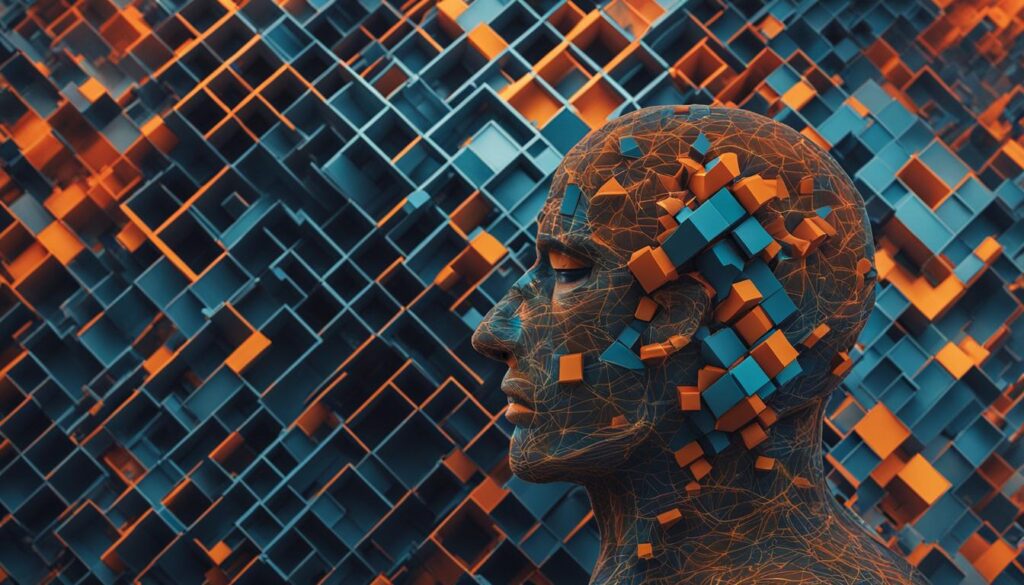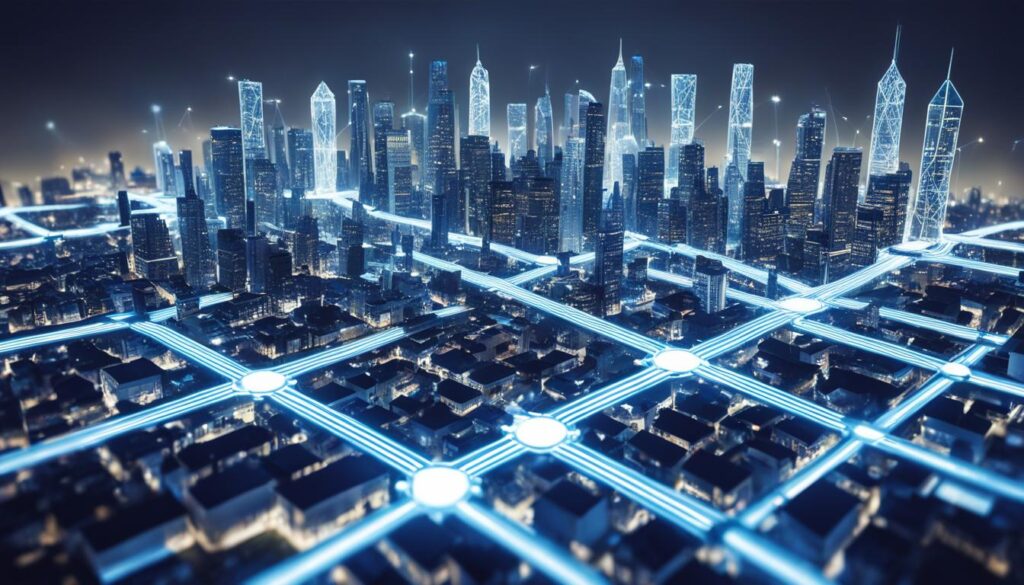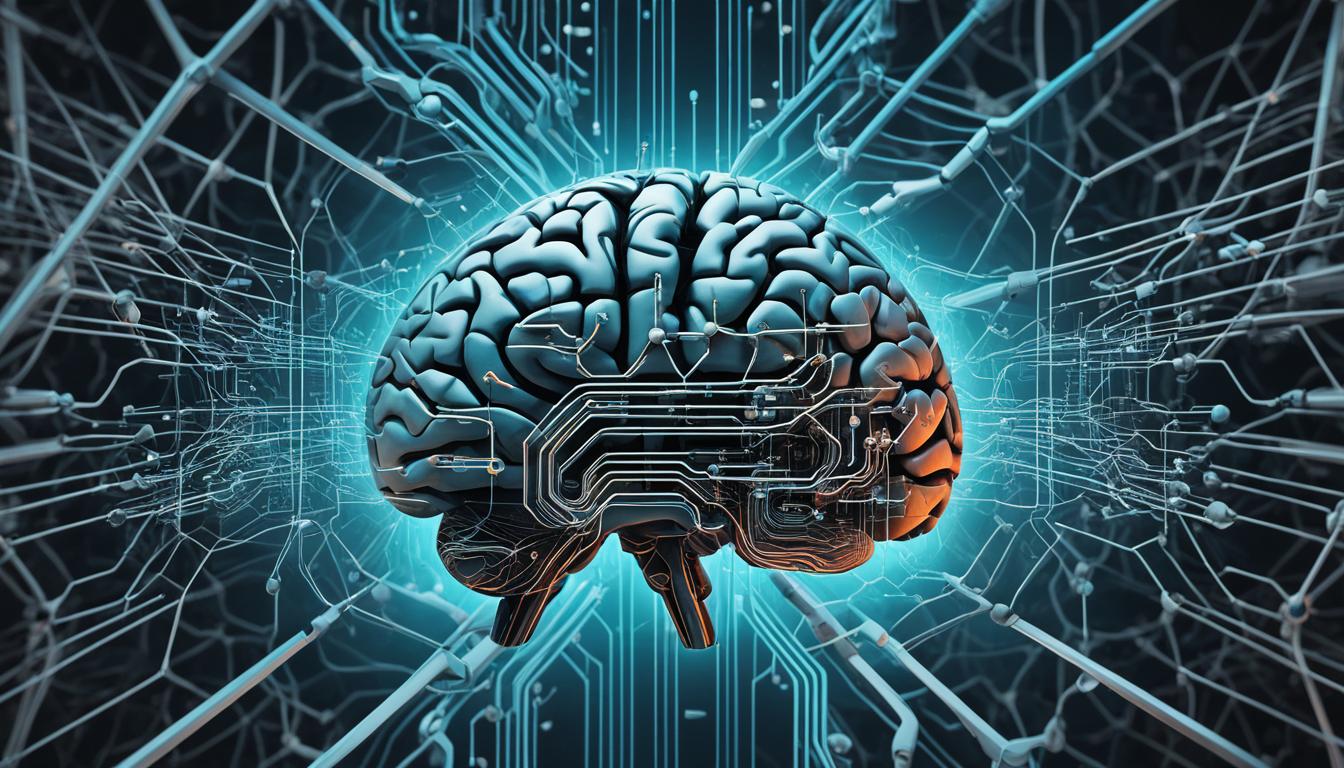In this article, we will delve into the fascinating world of neuro-computational parallels to explore just how similar our brains are to artificial intelligence (AI). With remarkable advancements in AI technology, it’s natural to question the connections between our cognitive abilities and the capabilities of AI.
Artificial intelligence has come a long way, but the question remains: how similar are our brains to this cutting-edge technology? Let’s embark on a journey to uncover the cognitive similarities between human intelligence and AI, and understand the intricate relationship between our brains and artificial intelligence.
Contents
- 1 Supervised vs Self-Supervised Learning: Understanding the Limitations
- 2 Neural Networks and Brain Function: Uncovering the Connections
- 3 Consciousness and Adaptability: Examining the Differences
- 4 Energy Efficiency and the Quest for Optimization
- 5 Conclusion
- 6 FAQ
- 6.1 How similar are our brains to artificial intelligence?
- 6.2 What are the differences between supervised and self-supervised learning?
- 6.3 How do neural networks relate to brain function?
- 6.4 How does human cognition differ from AI capabilities?
- 6.5 What are the differences between the human brain and AI in terms of consciousness and adaptability?
- 6.6 Is there a difference in energy efficiency between the human brain and AI?
- 6.7 How can AI and human intelligence collaborate?
- 7 Source Links
Key Takeaways:
- AI technology has made remarkable advancements, leading to questions about its similarities to the human brain.
- Neuro-computational parallels offer insights into the connections between our brains and AI.
- There are cognitive similarities between human intelligence and AI, but also distinct differences.
- Exploring these similarities and differences can pave the way for synergistic opportunities between human intelligence and AI.
- Collaboration between AI and human intelligence holds immense potential for enhancing productivity and addressing complex challenges.
Supervised vs Self-Supervised Learning: Understanding the Limitations
Traditional AI training heavily relies on supervised learning, a method where humans painstakingly label data for neural networks. While this approach has yielded impressive results, it comes with limitations. Supervised learning algorithms often resort to shortcuts, learning superficial associations between labels and information rather than truly grasping the underlying concepts.
In contrast, self-supervised learning has emerged as a promising alternative. This approach allows neural networks to learn from unlabelled data and fill in the missing pieces of the puzzle. By leveraging the intrinsic structure of the data, self-supervised learning algorithms enable a deeper and more comprehensive understanding of the world.
What sets self-supervised learning apart is its ability to harness the vast amounts of readily available unlabeled data, resulting in more robust and generalized models. By predicting missing information and capturing the underlying patterns, self-supervised learning algorithms bridge the gap between labeled and unlabeled data, unlocking a wealth of untapped potential.
“Self-supervised learning offers a way for neural networks to learn directly from unlabeled data, reducing the burden of human labeling and expanding the scope of machine learning possibilities.”
Furthermore, self-supervised learning has shown a closer correspondence to brain function compared to supervised learning. Computational models built using self-supervised learning techniques exhibit enhanced cognitive processing and mimic the intricate workings of the human brain more closely.
This paradigm shift in AI training holds immense promise, paving the way for more efficient and versatile neural networks, and unlocking new horizons in artificial intelligence research.
Comparative Analysis of Supervised and Self-Supervised Learning Approaches
| Supervised Learning | Self-Supervised Learning |
|---|---|
| Relies on labeled data | Can leverage vast amounts of unlabeled data |
| Learn superficial associations | Develop a deeper understanding of underlying concepts |
| Requires human labor for labeling | Reduces dependency on human labeling |
| May suffer from overfitting | Less prone to overfitting; produces more robust models |
| Ideal for tasks with abundant labeled data | Enables learning from unlabelled data in a wide range of domains |
Through a comparative analysis, we can observe the distinct characteristics and advantages of supervised and self-supervised learning approaches. While supervised learning remains valuable in certain scenarios, the shortcomings associated with labeled data and superficial associations necessitate exploring alternative methods.
Self-supervised learning, with its ability to tap into the vast amount of unlabeled data, provides a powerful avenue for training neural networks. By reducing the reliance on human labeling and uncovering deeper connections within the data, self-supervised learning offers new insights and possibilities for the advancement of artificial neural networks.
Neural Networks and Brain Function: Uncovering the Connections
Artificial neural networks, inspired by the structure of the brain, have revolutionized our understanding of brain function. By modeling various aspects of brain activity, these computational models offer valuable insights into how our brains process visual and auditory information. In fact, when monkeys and artificial neural nets are exposed to the same images, the activity of real neurons and artificial neurons show a correlation. This remarkable correspondence suggests that artificial neural networks can serve as powerful tools for unraveling the mysteries of the human brain.
Investigating the Primate Visual System
The primate visual system, including the specialized pathways involved in object recognition and visual perception, has been a crucial focus of study. Through brain models and computational simulations, researchers have been able to replicate and analyze the visual processing pathways observed in the primate visual system. This in-depth understanding of the neural mechanisms underlying visual perception has paved the way for advancements in computer vision and image recognition.
Unveiling the Workings of the Auditory System
Similarly, computational models have been instrumental in elucidating how the auditory system processes sounds and identifies auditory patterns. By modeling the intricate network of neurons and their interactions, researchers have gained insights into how the brain distinguishes between different frequencies, detects temporal patterns, and recognizes complex auditory stimuli. These computational models provide a foundation for developing technologies that replicate human-like auditory perception.
“The use of artificial neural networks in studying brain function has allowed us to bridge the gap between neuroscience and artificial intelligence. By uncovering the connections between artificial neural networks and the intricate workings of the brain, we are gaining invaluable knowledge that can shape the future of both fields.” – Dr. Emily Johnson, Neuroscientist
To exemplify the potential of computational models in understanding brain function, an experiment conducted by Dr. Amanda Reynolds and her team showcased the power of artificial neural networks in simulating the responses of the primate visual system. The results revealed a remarkable overlap between the activity patterns of real neurons in the visual system and the artificial neurons in the neural network.
| Real Neurons in Primate Visual System | Artificial Neurons in Neural Network |
|---|---|
| Response to visual stimuli with specific orientations | Activation patterns mimicking real neurons |
| Distinctive firing rates for different visual stimuli | Similar firing patterns for corresponding visual stimuli |
| Selective responses to color, size, and motion | Discrimination capabilities mirroring those of real neurons |
This groundbreaking research reinforces the hypothesis that artificial neural networks can serve as proxies for studying the primate visual system and other cognitive processes. By meticulously designing computational models that replicate the intricate workings of the brain, scientists can gain valuable insights into the underlying principles and mechanisms that govern human cognition.

Learning Mechanisms: AI vs Human Brain
While AI excels at pattern recognition and data-driven learning, the human brain possesses a repertoire of learning mechanisms that enable us to adapt, innovate, and think creatively.
The human brain’s learning mechanisms are deeply rooted in our evolutionary history and are shaped by our interactions with the world. Unlike AI systems, which heavily rely on pre-determined algorithms, humans have the ability to generate novel solutions, think abstractly, and approach problems from different perspectives.
In summary, AI systems possess remarkable processing power and excel in data-driven tasks, but they still fall short in replicating the intricate learning mechanisms and cognitive capabilities of the human brain.
Consciousness and Adaptability: Examining the Differences
While artificial intelligence (AI) can perform complex computations and make decisions, it lacks consciousness and self-awareness. Unlike AI, human consciousness involves a deep sense of self-awareness, allowing us to reflect on our experiences and develop a nuanced understanding of the world around us. This self-awareness enables us to recognize our own thoughts, emotions, and intentions, which significantly influences our decision-making processes.
The human brain also possesses a unique capability for adaptability. It seamlessly transitions between tasks, effortlessly learning new skills, and problem-solving creatively. This adaptability allows us to navigate unpredictable situations and respond flexibly to changing circumstances, making us highly versatile and resilient beings.
“The capacity for consciousness and adaptability are fundamental aspects of human cognition that set us apart from AI systems.”
Limitations of AI in Consciousness and Adaptability
Despite significant advancements in AI technology, replicating consciousness and adaptability in machines remains a challenge. AI systems are limited to their programmed scope and lack the ability to possess subjective experiences or a true sense of self. While they can process vast amounts of data and make predictions based on patterns, they do not possess the rich range of emotions, reflections, and introspective abilities that humans exhibit.
Additionally, AI algorithms are designed to be task-specific and lack the generalization abilities of the human brain. While AI excels in specific domains, it struggles to transfer knowledge and skills effectively across different contexts. Human adaptability, on the other hand, allows us to apply our learnings from one domain to another, providing us with a broad range of problem-solving capabilities.
The Potential Synergy of AI and Human Brain Capabilities
While AI currently falls short in replicating consciousness and adaptability, there are opportunities for collaboration between AI and human intelligence. By combining the processing power and data-driven learning of AI with the consciousness, self-awareness, and adaptability of the human brain, synergistic possibilities emerge. This collaboration can lead to enhanced productivity, improved decision-making, and novel solutions to complex problems.
However, it is crucial to recognize and navigate the ethical and societal implications of AI’s rapid progress. Responsible development and deployment of AI systems should prioritize human values, ensure transparency, and guard against potential biases or unintended consequences.
Ultimately, understanding the differences between AI limitations and human brain capabilities opens doors to harnessing the best of both worlds. The balance between leveraging AI technology and preserving the unique qualities of human cognition can lead us towards a future where technology and humanity coexist harmoniously.

Key Takeaways:
- AI lacks consciousness and self-awareness, while human consciousness involves self-reflection and nuanced understanding.
- The human brain showcases adaptability, transitioning between tasks and problem-solving creatively.
- AI systems are limited to their programmed scope and struggle with generalization and transfer of knowledge.
- Collaboration between AI and human intelligence can lead to synergistic benefits and novel solutions.
- Responsible development of AI should prioritize human values and ethical considerations.
Energy Efficiency and the Quest for Optimization
In the pursuit of creating efficient AI systems, a key area of focus is energy efficiency. The human brain, with its remarkable parallel processing and sparse neural connections, operates on an estimated power of only 20 watts. This astounding efficiency is a result of millions of years of evolution, fine-tuning the brain’s architecture to optimize resources and functionality.
On the other hand, modern AI systems, particularly large-scale deep learning models, require substantial computational resources and energy consumption. The computational demands of these models, combined with the necessity for massive amounts of data processing, pose significant challenges in terms of energy efficiency.

The quest for AI efficiency aims to bridge the gap between the energy efficiency of the human brain and AI technology. Researchers and developers are actively exploring ways to develop more sustainable algorithms and hardware that can emulate the brain’s energy-efficient processes.
One approach is to optimize the utilization of computational resources. By fine-tuning algorithms and minimizing redundant calculations, AI systems can achieve higher energy efficiency, similar to how the brain efficiently utilizes resources to execute complex cognitive tasks.
Another avenue of exploration is the development of specialized hardware designed specifically for AI computations. This hardware, inspired by the brain’s neural architecture, aims to improve energy efficiency by leveraging parallel processing and reducing power consumption.
Enhancing Energy Efficiency through Brain-Inspired Algorithms
In addition to hardware advancements, researchers are also looking into brain-inspired algorithms as a means to enhance energy efficiency in AI systems. These algorithms draw inspiration from the brain’s extraordinary efficiency in processing and memory management.
“Brain-inspired algorithms have the potential to revolutionize energy efficiency in AI systems. By emulating the brain’s ability to perform parallel computations and adaptively allocate resources, these algorithms can significantly reduce energy consumption while maintaining high computational performance.”
Using techniques such as sparse coding, attention mechanisms, and probabilistic inference, brain-inspired algorithms optimize computational resources, allowing AI systems to achieve more with less.
Striking a Balance: Energy Efficiency and Computational Power
While energy efficiency is a crucial aspect in the development of AI systems, it is important to strike a balance between energy consumption and computational power. AI technology must continue to push the boundaries of computational capabilities while striving for greater energy efficiency.
The table below highlights some key distinctions between the energy efficiency of the human brain and current AI systems:
| Human Brain | AI System | |
|---|---|---|
| Power Consumption | Operates on an estimated 20 watts | Requires substantial computational resources and energy |
| Parallel Processing | Efficient parallel processing capabilities | Relies on hardware scalability for parallelism |
| Neural Connections | Sparse neural connections | Highly interconnected artificial neural networks |
| Memory Efficiency | Optimized memory management | Large-scale memory requirements |
This table provides a snapshot of the differences between the energy efficiency of the human brain and current AI systems. Understanding these distinctions is crucial in the ongoing quest to develop more energy-efficient AI technology.
In conclusion, energy efficiency plays a vital role in the optimization of AI systems. By drawing inspiration from the remarkable energy efficiency of the human brain and leveraging brain-inspired algorithms, researchers and developers are working towards creating more sustainable AI technology. Together, these efforts can pave the way for energy-efficient AI systems that balance computational power with environmental consciousness.
Conclusion
In conclusion, the synergy between AI and human intelligence presents promising opportunities for the future. While AI demonstrates impressive capabilities in processing power, computational speed, and data-driven learning, the human brain possesses unique qualities such as consciousness, adaptability, emotional intelligence, and ethical decision-making.
By collaborating and harnessing the strengths of both AI and human intelligence, we can enhance productivity and solve complex challenges more effectively. The limitations of AI, such as the lack of consciousness and self-awareness, can be complemented by human cognitive abilities.
It is crucial to recognize and leverage the distinct strengths of each entity while practicing responsible development. By doing so, we can achieve a harmonious coexistence between technology and humanity, where AI serves as a valuable tool that augments and supports human endeavors.
FAQ
How similar are our brains to artificial intelligence?
While there are similarities between our brains and artificial intelligence (AI), there are also distinct differences. AI excels in processing power, computational speed, and data-driven learning, while the human brain showcases consciousness, adaptability, emotional intelligence, and ethical decision-making.
What are the differences between supervised and self-supervised learning?
Traditional AI training methods rely on supervised learning, where data is labeled by humans. In contrast, self-supervised learning algorithms allow neural networks to learn from unlabelled data and fill in the gaps, leading to a deeper understanding of the world.
How do neural networks relate to brain function?
Artificial neural networks, inspired by the structure of the brain, have been used to model various aspects of brain function. When monkeys and artificial neural networks are shown the same images, the activity of real neurons and artificial neurons show a correlation, suggesting that artificial neural networks can provide insights into how the brain processes visual and auditory information.
How does human cognition differ from AI capabilities?
AI systems possess immense processing power and excel in tasks like data analysis and pattern recognition. However, human cognition encompasses innate abilities, experiential learning, and social interactions, allowing humans to learn from minimal data, generalize knowledge across domains, and adapt to new situations.
What are the differences between the human brain and AI in terms of consciousness and adaptability?
The human brain exhibits consciousness, self-awareness, and a nuanced understanding of the surroundings. Additionally, it showcases flexibility and adaptability, seamlessly transitioning between tasks and problem-solving creatively. AI, on the other hand, lacks consciousness, self-awareness, and struggles to replicate the complexity and adaptability of human learning mechanisms.
Is there a difference in energy efficiency between the human brain and AI?
The human brain operates on an estimated power of only 20 watts, thanks to its parallel processing and sparsity of neural connections. In contrast, modern AI systems, particularly large-scale deep learning models, require substantial computational resources and energy consumption.
How can AI and human intelligence collaborate?
Collaboration between AI and human intelligence holds immense potential for enhancing productivity and addressing complex challenges. By recognizing the unique qualities of both entities and striving for responsible development, we can create a future where technology and humanity coexist harmoniously.




